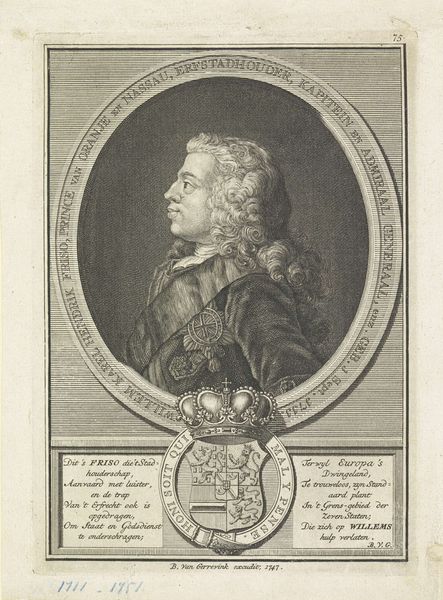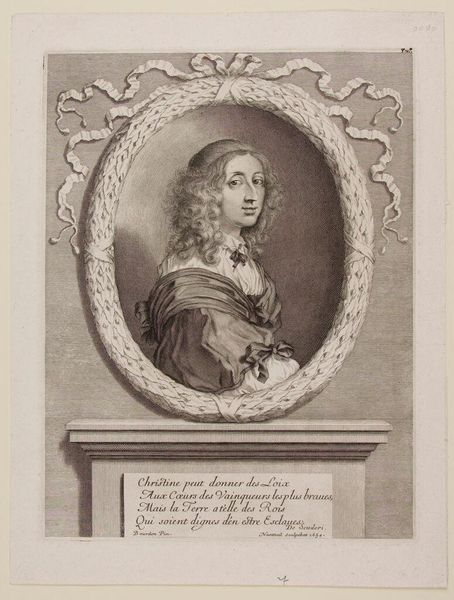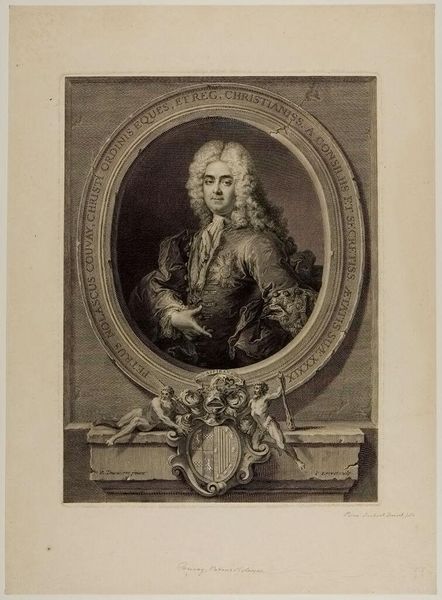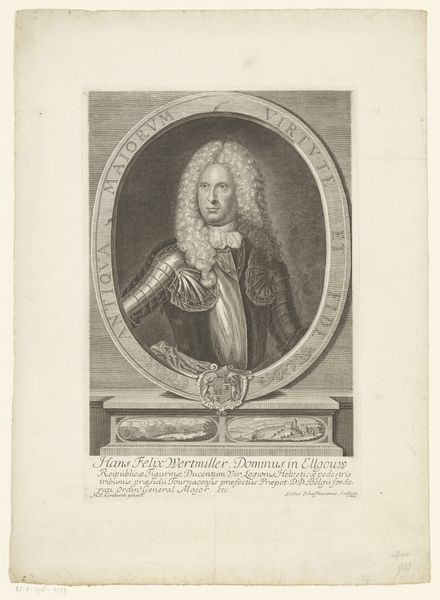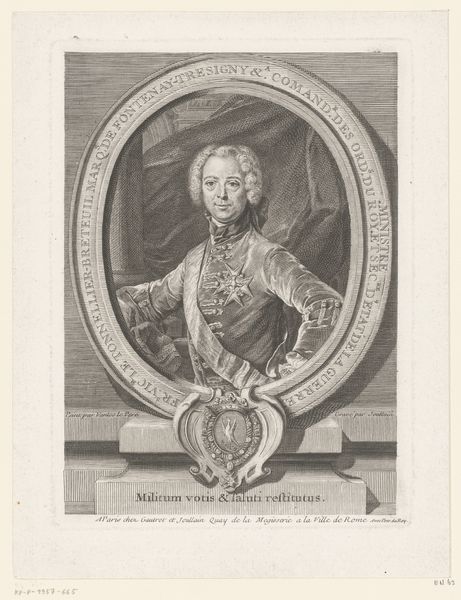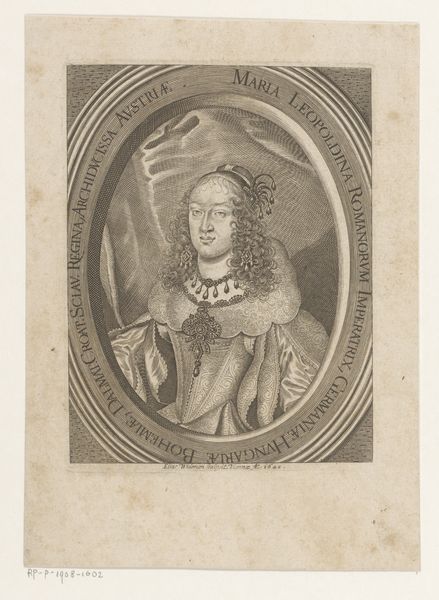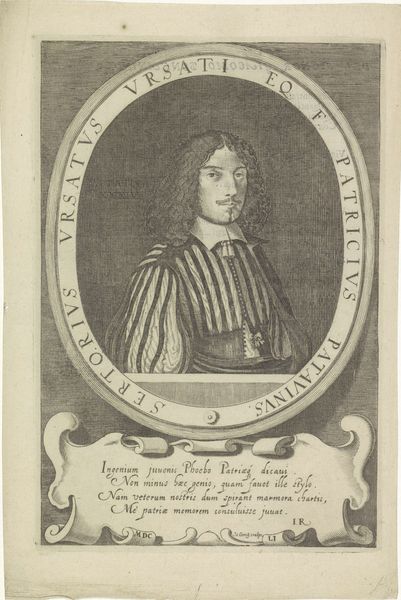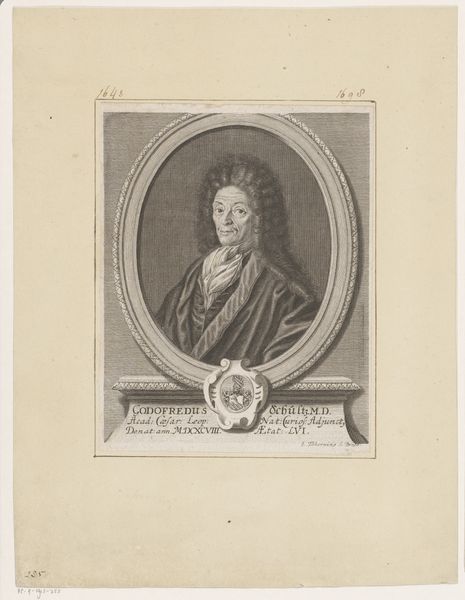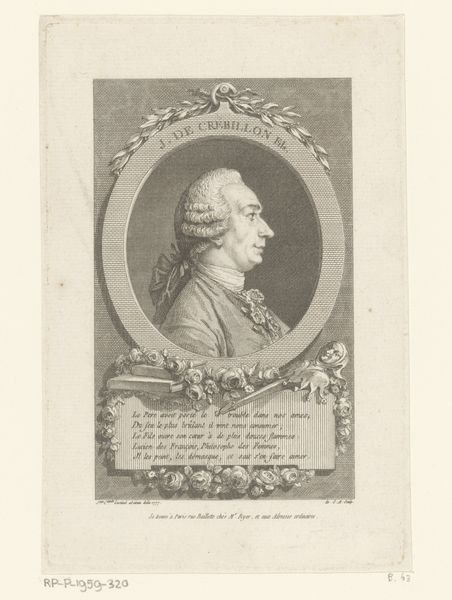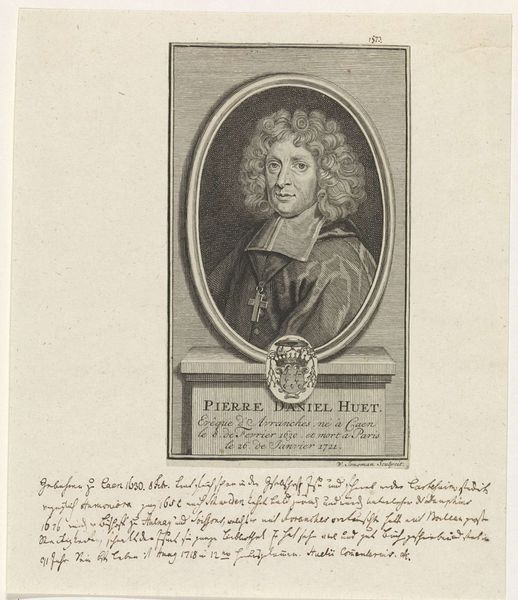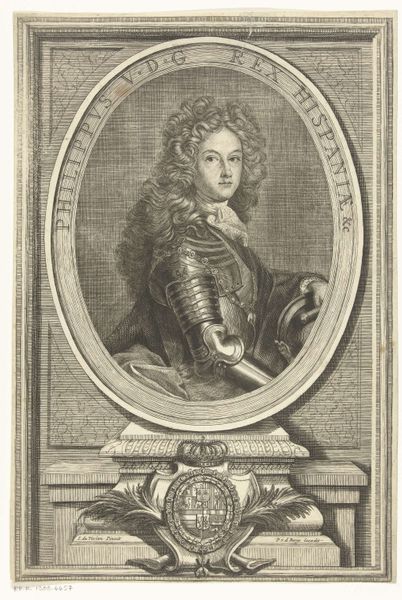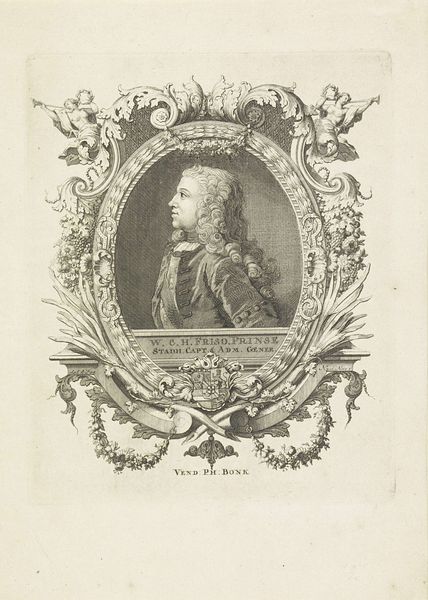
print, engraving
#
portrait
#
baroque
# print
#
line
#
engraving
Dimensions: height 182 mm, width 122 mm
Copyright: Rijks Museum: Open Domain
This is Edward Rooker’s portrait of Willem IV, Prince of Orange-Nassau, an engraving made in the eighteenth century. The most striking symbol here is Willem's elaborate wig. Wigs, initially practical for concealing hair loss, evolved into potent symbols of status and power, especially during the 17th and 18th centuries. Across Europe, from the courts of France to the halls of England, similar styles emerged, reflecting a shared aristocratic visual language. Think of the portraits of Louis XIV, whose wig was as much a part of his regal persona as his crown. The wig signifies more than mere fashion; it represents an attempt to assert control over nature itself. As societies evolved, so did the wig, morphing from a marker of hygiene into a canvas for expressing social rank. It became a codified symbol, a mask through which identity was both concealed and revealed. The portrait’s symbolism resonates with echoes of power and the performance of identity, engaging us on a subconscious level, a visceral reminder of the enduring human impulse to craft and control our image.
Comments
No comments
Be the first to comment and join the conversation on the ultimate creative platform.

